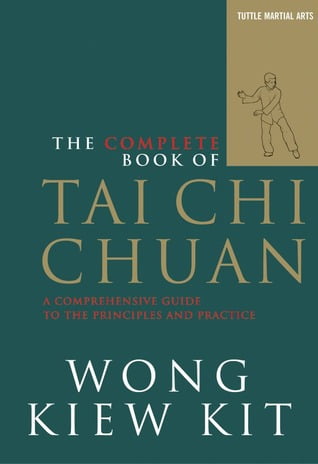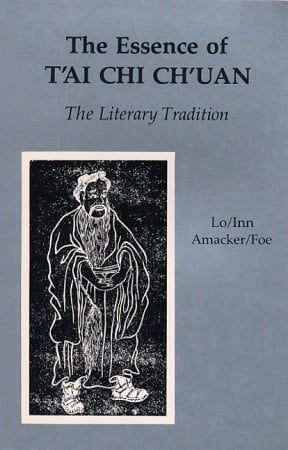A reference to Tai Chi Chuan would not be complete without including a book section. There are quite a few books available on the subject of Tai Chi Chuan and many of these have been written by Grand Masters of a specific style.
There are far too many books available on the market to list all of them here. Therefore I tried to include only the books that I consider the best authority on the matter. They are either a great reference or simply books that have helped me a great deal in advancing my practice of Tai Chi Chuan. Besides that, I cannot possibly include any book which I have not read myself, so this list will (hopefully) grow over time!
Though I practice specific styles myself, I tried to remain unbiased in my list of books as I believe one is able to learn from many different perspectives and sources. For example, simply by joining another martial art class or fighting someone that practices another art or style, you will learn a lot about your own style. This also applies to the different styles within Tai Chi Chuan. And so it goes similarly when you read books from different authors with different subjects. Try to stay within the Martial Art section though, don’t expect to learn much Gong Fu from Tai Chi Cooking books, believe me they exist!
All in all, you will find that some of the books are very comprehensive where others are more focused on a specific style. Considering the popularity of the Yang-style, many authors who have written some of the best works (in my opinion), are proponents of that style. That does not mean that any other style is worse, on the contrary. Chen-style is the original style of Tai Chi Chuan, though I find that mainly Western resources on the subject are unfortunately not as abundant as they are for the Yang-style.
Of course if you’d like to recommend a book to me, send me an email and I’ll gladly read it. And if it is as good as you say I will surely add it to this list! That said, I hope you find some wisdom in the below listed books.

Wong Kiew Kit’s book is, as rightfully said in its title, a “complete” and comprehensive guide to Tai Chi Chuan.
If you are new to Tai Chi Chuan this book will fill you in on many of its fundamentals and theories. It has a lot of info on the history, philosophy, how to practice and also many sections with illustrations of the forms of different styles. The latter is in my opinion less useful for a more serious practitioner as you will find that truly practicing the form or taolu of Tai Chi Chuan is best done under the tutelage of a skilled teacher.
For more advanced students, it is a good reference book with many key insights from Mr. Kit. I personally use it like that and leaf through some of the chapters as a reminder.
It reads rather nicely and quickly, it talks about Tai Chi Chuan in general terms and is very accessible to readers and students of all levels simply because the writing style of the book and introductions of the topics are, in its most positive meaning, pleasantly plain-and-simple.
After reading this book and practicing for a while, you may find that you want to dive a little deeper into the mysteries of Tai Chi Chuan and for that scroll further down. Definitely a must-have for novices.
Let me start with an annotation here. Dr. Yang, Jwing-Ming is as someone nicely said in a comment I read, an accomplished Master of the highest order. He has written a multitude of books on Tai Chi Chuan and Qi Gong and it is impossible to argue against the fact that he contributed a lot to the spread and understanding of Tai Chi Chuan.
I deliberately chose to add only this book (and one other about Qi Gong) to my list for the following reasons.
The first reason being that I think this book is a gem. It can not be missing from your library. The French have a beautiful word for this ‘incontournable’, and it means you can practically not get around it.
The second reason being that Dr. Yang has written a LOT of books and they are thick. Dr. Yang writes sometimes almost scientifically about every aspect of Tai Chi, philosophy and Chuan alike. I can only assume he must be a walking Tai Chi Chuan dictionary. His other books are just as thorough and I can only recommend reading some of them, for example Martial Power.
Chin Na and the applications and inner workings (like Jing) of Tai Chi Chuan are often neglected aspects of Tai Chi Chuan and are quite often either omitted entirely or simply misunderstood by many teachers and practitioners alike. However, without it, the art is not complete. Dr. Yang often explains in his book that Tai Chi Chuan is losing its martial aspect and hence its soul, and his books often aim to enlighten the reader about the underlying principles and the many hidden and formerly secret practices of Tai Chi Chuan.
The only downside I can find is the beginning chapters are sometimes repeated in his other books, but then again, if you own one of them, you will be sure to have a thorough complete work in your hands.
For true beginners I would not recommend this book, but the serious practitioner and advanced student will find much useful information in it. Any practitioner that feels something is lacking from their Tai Chi Chuan or wants to explore in-depth principles should read this book or at least have one of Dr. Yang’s book to explore its richness (you can always read more afterwards and believe me there are many, he even has his own publication centre).


Third in the list of books is this practical book written by Professor Cheng who shares the secrets of his lineage and most notably presents Tai Chi Chuan as a medicine and a means of exercise and self-development. With examples from anatomy and physics, he demonstrates precisely how the postures and moves work, internally as energetic principles, and externally on opponents.
He was a notable Chinese expert of Tai Chi Chuan, TCM (Chinese Traditional Medicine), and the so-called three perfections: calligraphy, painting, and poetry. Because of his skills in these five areas, considered among some of the traditional skills and pastimes of a Confucian scholar, he was often referred to as the “Master of Five Excellences.” Because he had been a college professor, his students called him “Professor Cheng”.
Though he is a direct descendant of original Yang lineage-holder Yang Chengfu, there are some controversies surrounding his 37 short form. The most notable one is the continuous debate about the originality of his lineage. Nevertheless Cheng Man Ch’ing’s legacy currently includes many hundreds if not thousands of schools around the world, mainly in Taiwan, the USA and Europe. Current Grandmaster William C.C. Chen was a student of his. Especially his willingness to teach non-Chinese students has created a large following in the West with the result being many Western students practicing the 37 short form or some descendant of that through Cheng’s students.
Besides the 37 short form, which is explained in full detail, Cheng dedicates numerous chapters to the intricate workings of Tai Chi Chuan and how its practice could be beneficial to our health. Even if you are not interested in the form itself, the accompanying chapters contain some real wisdoms about the art.
A wonderful little handbook of the classical Chinese literature which are the guidelines of Tai Chi Chuan. On my page Tai Chi Classics I explain a bit more in detail what these classics are, but in short they are a collection of articles or texts on Tai Chi Chuan written by the art’s master practitioners over the centuries. They cover everything from the underlying Taiji philosophical principles, to methods of practice and application.
This is the first English translation of the classic texts of Tai Chi Chuan and for all the serious practitioners, intermediate and advanced students, this is required reading.
Fun fact, the book was translated from Chinese by Benjamin P. Lo who also translated the Cheng Man Ch’ing book listed above.


With Taoist principles being so intertwined with Tai Chi Chuan, it’s only normal to recommend a book that dives into the mysteries of this wonderful Chinese philosophy.
I say philosophy because in its essence Taoism never came to rise as a religion or a cult with a dogma. If we were to call it a “religion” it is interesting to know that it is one of the only ones that does not enforce a narrative on the world. Like Buddhism, it is also one of the few “religions” that embraces science rather than opposing it and is therefore quite practical for modern life as we know it.
Many artists have written about it, but I don’t believe there is anyone that has written so clearly and wonderfully as Alan Watts. For people who are completely unaware with Taoism, this book is great. Yet, in its simplicity it is a gem to keep on the book shelf even for more advanced and regular practitioners.